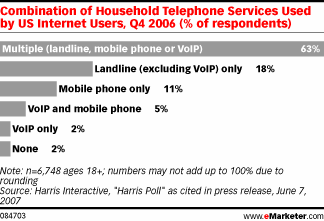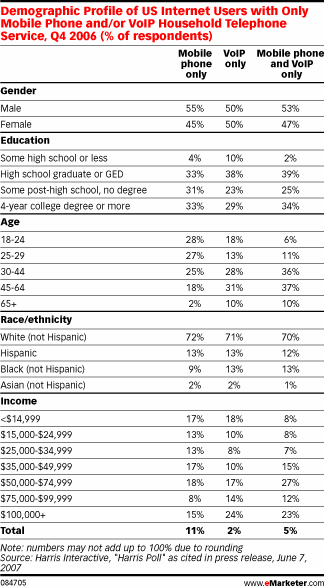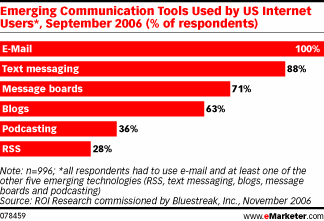About six in 10 US adults used multiple approaches to making telephone calls. Just less than one in five used only a landline phone, 11% used only their cellphone and 2% used only VoIP.

Mobile-phone-only users tended to be male and better educated, but less affluent than the general adult population.

The mobile-only population is important, because US mobile customers are starting to use their handsets for more than simply talking. Text messaging has taken off in the US, with nearly 90% of those responding to a November 2006 ROI Research survey commissioned by Bluestreak saying they had started to text.

A separate October 2006 Harris study revealed that 20% of mobile Internet users preferred to receive product and service recommendations through text, as opposed to 13% who preferred mobile banner ads and 5% who preferred telemarketing.





